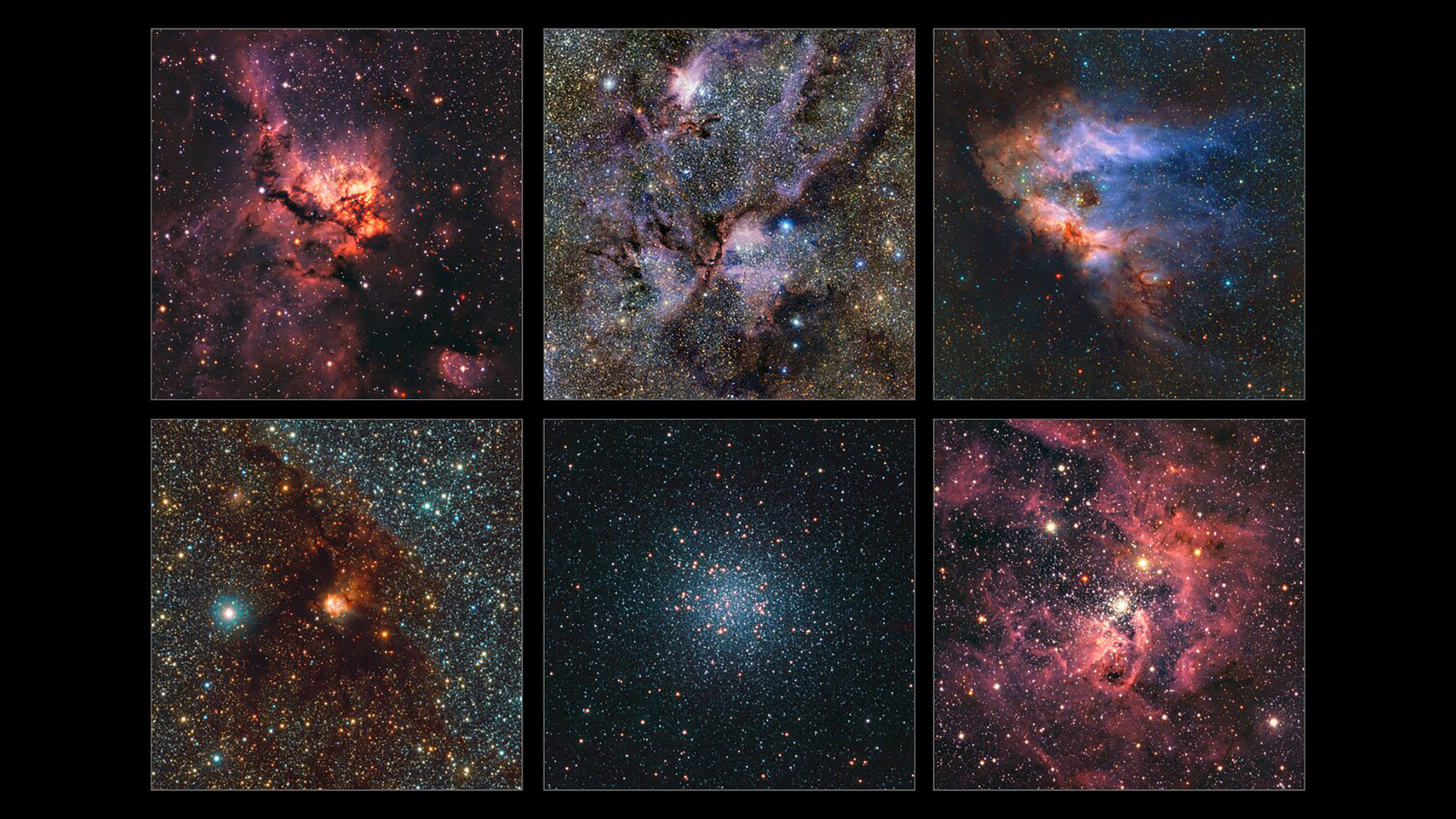Astronomers from the European Southern Observatory (ESO) have released the most detailed infrared map of the Milky Way galaxy ever compiled. Completed after more than 13 years of monitoring using the ESO’s Visible and Infrared Survey Telescope for Astronomy (VISTA) at the group’s Paranal Observatory in Chile, the project adds up to 500 terabytes of data containing over 1.5 billion cosmic objects. Taken as a whole, the mapping is the largest survey of its kind to employ an ESO telescope.
According to a September 26 announcement, the survey began in 2010 and continued through the first half of 2023, ultimately collecting images over 420 nights. The results are detailed in the September issue of the journal Astronomy & Astrophysics. Observing specific patches of evening sky multiple times allowed astronomers to determine object locations, movement, and changes in brightness. A star’s shifts in luminosity, for example, allows experts to use them as “cosmic rulers” to measure distances between galactic entities, which then helped generate an accurate 3D view of the Milky Way’s interior. VISTA’s infrared camera, VIRCAM, also allowed the team to filter through cosmic dust and keep tabs on “hypervelocity stars,” whose extreme speeds originate from near-misses with the galaxy’s central supermassive black hole, Sagittarius A*.


“We made so many discoveries, we have changed the view of our galaxy forever,” Dante Minniti, VISTA Variables in the Vía Láctea (VVV) survey project lead and an astrophysicist at Chile’s Universidad Andrés Bello, said in a statement. Vía Láctea is the Latin name for the Milky Way.
The total area of the sky mapped is equal in size to 8,600 full moons that include an estimated 10 times more galactic objects than the team’s previous map, released in 2012. Among these hundreds of millions of tiny specks of light lurk newborn stars, extremely cold brown dwarfs that only glow at infrared wavelengths, free-floating planets, and globular clusters—groupings containing millions of the Milky Way’s oldest stars in existence.

More than 300 scientific articles containing numerous discoveries and new information have been published thanks to the survey and its partner project, the VVV eXtended (VVVX) survey. Moving forward, VISTA will receive a new instrument, the 4-meter Multi-Object Spectrograph Telescope (4MOST), which will allow the system to perform larger spectroscopic surveys capable of imaging 2,400 objects’ spectra at the same time across a region of the sky equal to 20 full moons.
[Related: Humongous stellar-mass black hole is the biggest ever found in Milky Way.]
Meanwhile, ESO’s Very Large Telescope (VLT) will receive an upgrade through the Multi-Object Optical and Near-infrared Spectrograph (MOONS), which is dedicated to studying galaxy formations and evolutions throughout the known universe’s history.

